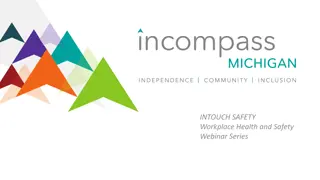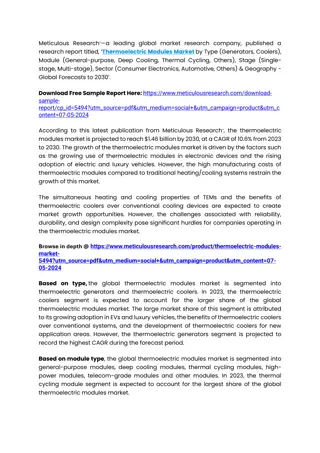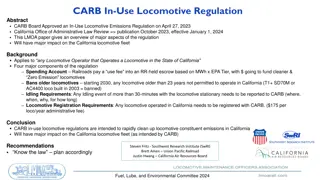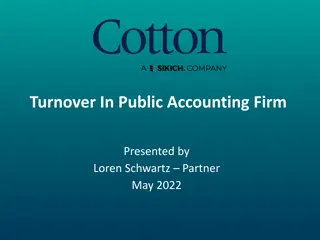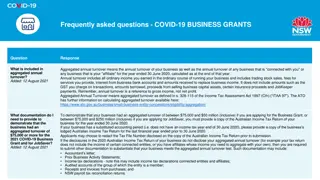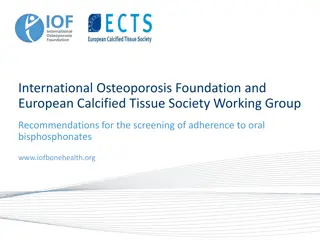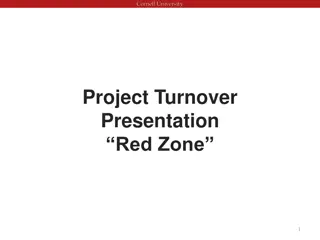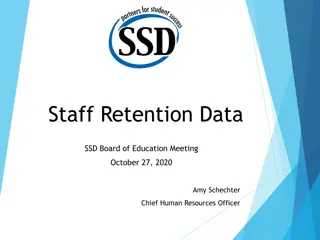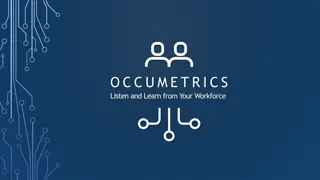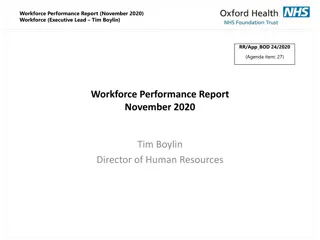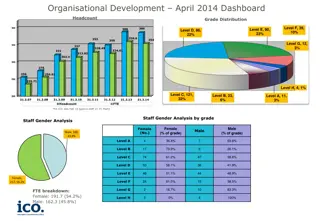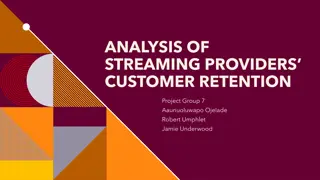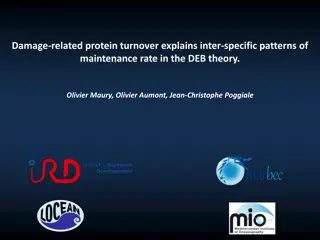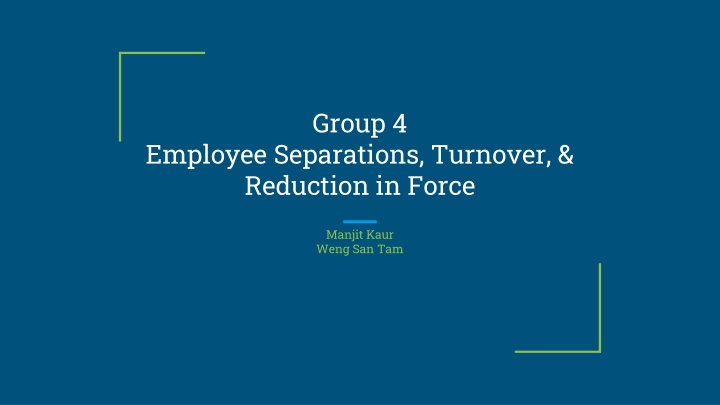
Impact of Motivation, Empowerment, and Skill-Enhancing Practices on Employee Turnover
Analyzing how motivation, empowerment, and skill-enhancing practices impact aggregate voluntary turnover, with a focus on the mediating effect of collective affective commitment. Results indicate a negative relationship between commitment and turnover, emphasizing the importance of tailored incentive programs for reducing turnover.
Download Presentation

Please find below an Image/Link to download the presentation.
The content on the website is provided AS IS for your information and personal use only. It may not be sold, licensed, or shared on other websites without obtaining consent from the author. If you encounter any issues during the download, it is possible that the publisher has removed the file from their server.
You are allowed to download the files provided on this website for personal or commercial use, subject to the condition that they are used lawfully. All files are the property of their respective owners.
The content on the website is provided AS IS for your information and personal use only. It may not be sold, licensed, or shared on other websites without obtaining consent from the author.
E N D
Presentation Transcript
Group 4 Employee Separations, Turnover, & Reduction in Force Manjit Kaur Weng San Tam
THE IMPACT OF MOTIVATION, EMPOWERMENT, AND SKILL-ENHANCING PRACTICES ON AGGREGATE VOLUNTARY TURNOVER: THE MEDIATING EFFECT OF COLLECTIVE AFFECTIVE COMMITMENT Manjit Kaur
Key Terms Collective Affective Commitment Motivation-enhancing practices Empowerment-enhancing practices Skill-enhancing practices
Focus: To analyze if collective affective agreement has a mediating effect on motivation, empowerment and skill-enhancing practices when it comes to aggregate voluntary turnover
Method: Researchers tested a single business that supplies and markets foods and food related goods Conducted job groups within each business unit 93 job groups; 1,748 employees
Model: - MEP Aggregate Voluntary Turnover _ _ Collective Affective Commitment EEP SEP + GHC (General human capitol) FHC (Firm-specific)
Results: There was a NEGATIVE relationship between collective affective commitment and aggregate voluntary turnover. Skill enhancing-practices are POSITIVELY associated with aggregate turnover but independent of collective affective commitment. Motivation and empowerment practices had a POSITIVE correlation to affective commitment; therefore, reducing aggregate voluntary turnover.
Take-home message: Managers should increase their skill-enhancing practices with motivation and empowerment enhancing practices because it increases commitment and reduces turnover. If managers wish to implement skill enhancing practices, they need to tailor their incentive programs.
GONE TODAY BUT HERE TOMORROW: EXTENDING THE UNFOLDING MODEL OF TURNOVER TO CONSIDER BOOMERANG EMPLOYEES Abbie J. Shipp, Stacie Furst-Holloway, T. Brad Harris, Benson Rosen Present by Weng San Tam
Key Terms Boomerangs Alumni Unfolding Model of Turnover
Focus: Examine the post-turnover relationship between employees who quit an organization Why do Boomerangs leave then return?
Source: PROSERV 20,855 980 19,875 Boomerangs Former Employees 452 3,164 Finished Surveys Finished Surveys
Boomerangs Boomerangs Boomerangs
Take Home Message Why? Boomerangs can save firm s money Why? Have plan and/or Dissatisfaction new job What? -Exit interview -Optimize the retention strategies How? Keeping personal contact, not formal recruit
Boomerangs Employees -Select Boomerangs carefully (train & satisfy) -Retaining and satisfying current employees to avoid permanent leave


